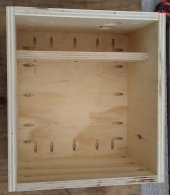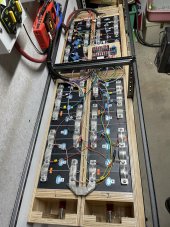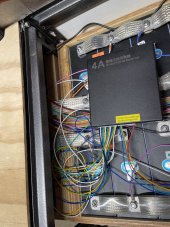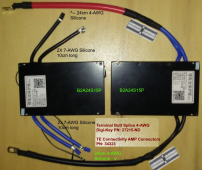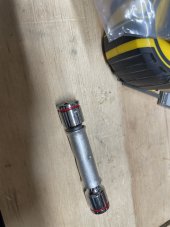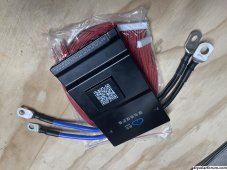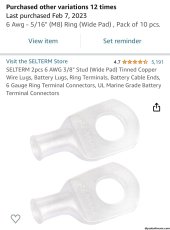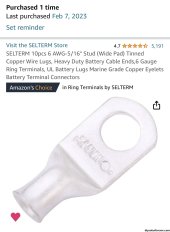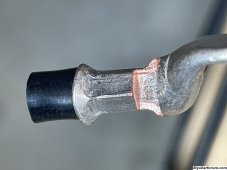I’m planning on mounting JK 200amp versions on the end of a 16S wooden battery boxes. For ease of connection, supplied balance wire length and seeing status light, I’m orienting it connector end up (FET end down). The bms would be spaced off the box about 3/16” by the use of four 1” square 3M cable tie mounts so there should be plenty of room for convection cooling all around. A dab of Shoegoop on the cable ties to keep it from slipping down over time. There’s an identical battery box/bms and they will be placed so the bms’s are back to back (bump to bump) with about 1 1/2” spacing between them. The batteries reside under a workbench where the batteries are protected and kept away from dirt and large dust but are easily accessible by a lift away bench top. The area above the battery banks/bms’s are protected but there is a 4” clearance above them that allows ambient air. All wood has been soaked in fire retardant. The inverters have an absolute maximum continuous total limit of 300 amps (150 per bms) yet the Daly that’s going to be replaced has only ever seen half that total load. So normal high daily, non surge, continuous long load (15 minutes +) is going to be about 50 amps per bms. I’ll be setting each current overload at 175 amps with a short time delay and I have a 250amp fast T class fuse on each as well. Yes the FET end up would probably keep much of the heat away from the fine board components and light setting dust at the connector end (probably just put a Kapton tap over the end) but it’s going to be a lot more work to turn it around. I don’t know how much warmth the JK’s generate, the 300A Daly’s heat was imperceptible and the it’s fan came on exactly one time during the heat wave with the hvac on.
Just go with the plan JK connector up? Comments?
Just go with the plan JK connector up? Comments?



